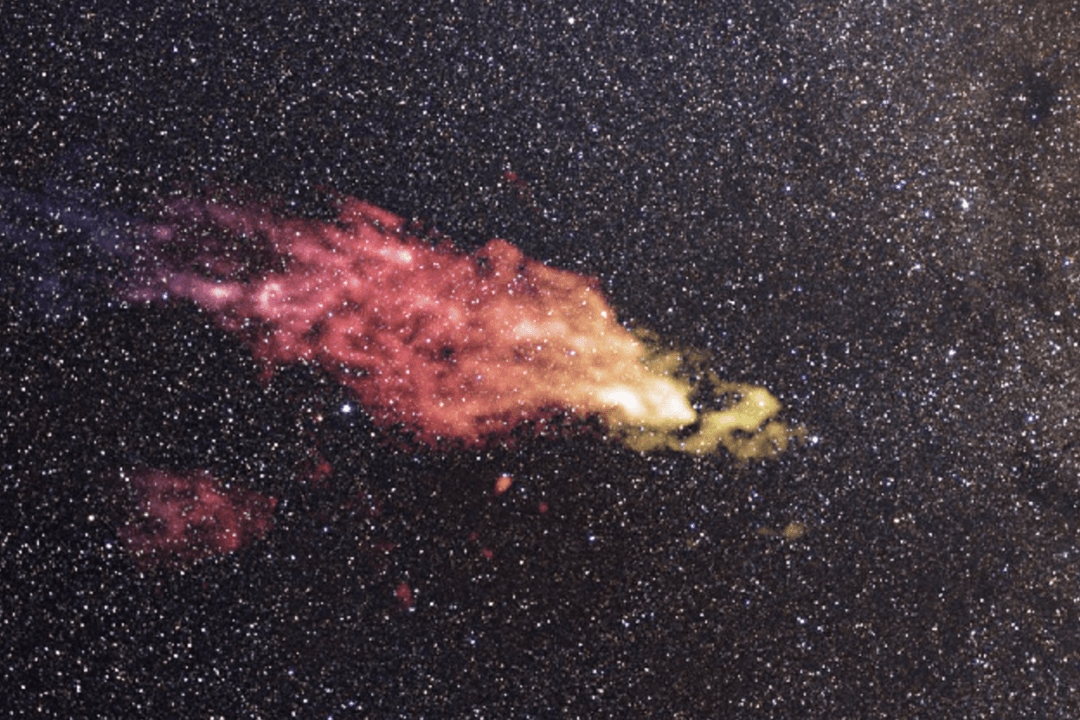The Smith Cloud, a giant gas cloud discovered in the 1960s, is hurtling at the Milky Way at 700,000 miles per hour. Astronomers now believe it contains enough elements similar to our Sun to generate over 2 million new stars when it impacts the Milky Way disk.
But not to worry—the impact is expected to be 30 million years from now.
The Smith Cloud, which contains the raw material for stars, is so massive that if it were visible, it would appear to be 30 times larger by diameter than the Moon, even though it’s thousands of light years away.

A scaled image showing how large the Smith Cloud would appear in the sky relative to the Moon. Saxton/Lockman/NRAO/AUI/NSF/Mellinger





